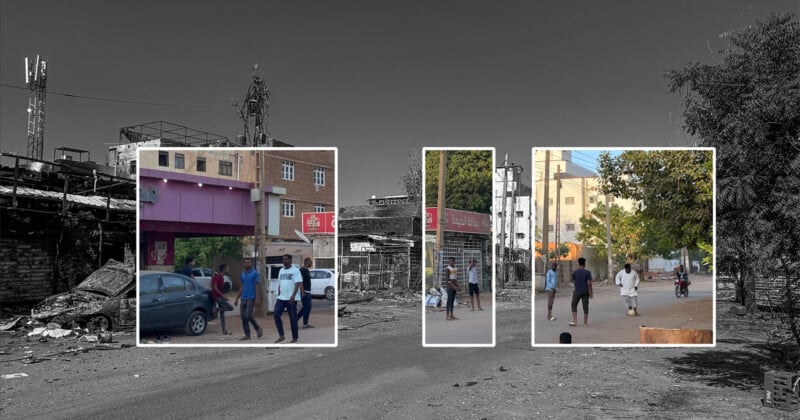Before and After Photos Capture Destruction Brought by Civil War in Sudan

The civil war in Sudan that began on April 15, 2023, has claimed the lives of tens of thousands. The humanitarian crisis it has created threatens hundreds of thousands, yet it’s a distant conflict that Westerners know little about.
At the start of this year, the United States declared ethnic cleansing had taken place in the Darfur region which it characterized as a genocide. The war between the Sudanese Armed Forces (SAF) and the paramilitary Rapid Support Forces (RSF) has affected millions of Sudanese, including photographer Mosab Abushama.
“This project began as a personal visual diary, just me documenting everyday life,” Abushama tells PetaPixel. “But when the war started, everything changed. It happened because I stayed, because I had to stay.”
“As a Sudanese and a photographer, navigating this new reality poses profound challenges. What is life like for people amidst the war? How do they cope, and how has the conflict altered the very fabric of their existence? The present shapes our future, yet many stories and events remain untold and unreachable due to the perilous circumstances,” he says.
Abushama’s project Tadween, Arabic for “recording”, began when he first started pursuing photography as a hobby in 2019. He captured life in his home city of Omdurman; children playing, families eating together, and street scenes.
But Abushama, who frequently uses a smartphone camera, became an accidental war photographer as his local neighborhood became a battlefield and he and his family became displaced. Many of his relatives fled the country but Abushama stayed behind with his elderly father in a different area. He returned home after a year of fighting to find the place where he used to live had been razed to the ground.
“After a year, I was finally able to return to my house and neighborhood,” he says. “Seeing those familiar places again, now changed by war, I felt a strong need to show people how I experienced them. By layering old photos over new ones, I wanted to visually express the contrast between what was and what is.”
Abushama’s resulting photos are a poignant example of the destruction of war, contrasting the carefree life before war broke out and the devastation afterward.
“I want people to know the truth,” he says. “To understand what we’ve endured, what we’ve lost, and how the war has affected every part of our lives. Sudan is more than headlines — it’s people, families, homes, and dreams.”

Since gaining independence from Britain in 1956, Sudan has endured 20 military coup attempts — the highest number of any African nation. The current conflict erupted after the ousting of longtime dictator Omar al-Bashir in 2019, a moment that briefly sparked hope for a democratic transition. But when the two military factions, the SAF and the RSF, who were meant to share power with civilian leaders, turned on each other, the country was plunged into chaos.
“It’s my country, my home. I hope I can return,” says Abushama who was recently recognized by World Press Photo for his image of a groom holding a gun at his wedding in Omdurman. The wedding took place against the backdrop of gunfire and artillery shelling but he still describes the event as “beautiful.”
Abushama is currently residing in New York City and studying at the School of Visual Arts. More of his work can be found on Instagram.
Image credits: Photographs by Mosab Abushama